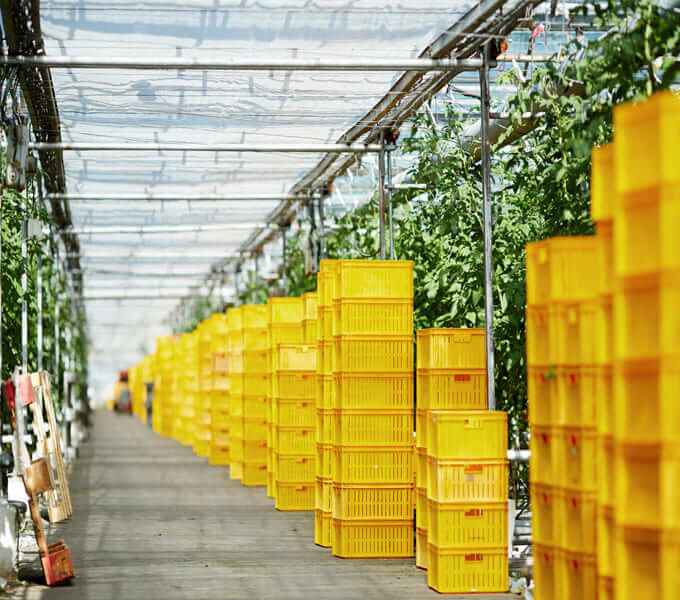How to Identify High-Quality vs. Low-Quality Plastic Products When Buying in Bulk
When purchasing plastic products in bulk, distinguishing between high-quality and low-quality items is crucial for ensuring durability, safety, and cost-effectiveness. This guide will help you identify key factors to consider, ensuring that your investment in industrial plastic products meets your expectations.

1. Material Composition
The foundation of any plastic product lies in its material composition. High-quality plastics are typically made from virgin materials, ensuring consistency and strength. In contrast, low-quality products often incorporate recycled or substandard materials, leading to brittleness and reduced lifespan.
High-Quality Indicators:
Uniform texture and color.
Absence of strong chemical odors.
Clear labelling of material type (e.g., HDPE, PP).
Low-Quality Indicators:
Inconsistent coloration or streaks.
Pungent chemical smell.
Lack of material identification.
2. Manufacturing Standards
Reputable plastic products manufacturers adhere to stringent manufacturing standards, ensuring product reliability and safety.
High-Quality Indicators:
Compliance with international standards (e.g., ISO certifications).
Detailed product specifications and tolerance.
Transparent quality control processes.
Low-Quality Indicators:
Absence of certifications or standards.
Vague or missing product details.
Lack of quality assurance documentation.
3. Design and Engineering
The design intricacies of a plastic product can significantly influence its performance, especially in industrial applications.
High-Quality Indicators:
Ergonomic and functional design tailored to specific uses.
Reinforced stress points to prevent wear and tear.
Precision engineering ensuring consistent dimensions.
Low-Quality Indicators:
Generic or one-size-fits-all designs.
Visible Weak points or thin areas prone to breaking.
Inconsistent measurements leading to fitting issues.
4. Durability and Performance
For applications involving industrial plastic bins or other heavy-duty items, durability is paramount.
High-Quality Indicators:
High load-bearing capacity.
Resistance to environmental factora like UV radiation and chemicals.
Long-term performance warranties.
Low-Quality Indicators:
Low weight thresholds.
Susceptibility to cracking under stress or exposure.
Short or non-existent warranties.
5. Sustainability Practices
With growing environmental concerns, opting for sustainable plastic products is both a responsible and strategic choice.
High-Quality Indicators:
Use of eco-friendly materials or biodegradable plastics.
Commitment to reducing carbon footprint during production.
Participation in recycling programs or offering recyclable products.
Low-Quality Indicators:
No information on environmental impact.
Use of hazardous materials or additives.
Products that contribute to environmental degradation.
6. Customization Options
Businesses often require custom plastic products to meet specific needs. The ability to customize can be a testament to a manufacturer's capability and quality focus.
High-Quality Indicators:
Offers tailored solutions in design, color, and functionality.
Collaborative approach to meet client specifications.
Prototyping and testing services to ensure product suitability.
Low-Quality Indicators:
Limited or no customization options.
Reluctance to deviate from standard designs.
Lack of flexibility in production processes.

7. Manufacturer Reputation
The standing of plastic products manufacturers in the industry can provide insights into product quality.
High-Quality Indicators:
Positive reviews and testimonials from reputable clients.
Longevity and stability in the market.
Awards or recognitions for quality and innovation.
Low-Quality Indicators:
Frequent customer complaints or negative feedback.
Short operational history or frequent rebranding.
Lack of industry recognition or partnerships.
8. Cost vs. Value
While cost is a significant factor in bulk purchases, it's essential to assess the value offered.
High-Quality Indicators:
Competitive pricing reflecting product quality.
Transparent breakdown of costs.
Assurance of long-term savings due to product durability.
Low-Quality Indicators:
Prices significantly lower than market average.
Hidden fees or unclear pricing structures.
Higher long-term costs due to frequent replacements or failures.
9. Testing and Certification
Independent testing and certifications can validate product claims and ensure compliance with safety standards.
High-Quality Indicators:
Products tested by recognized laboratories.
Certifications for safety, durability, and environmental impact.
Availability of test reports upon request.
Low-Quality Indicators:
No evidence of independent testing.
Lack of certifications or outdated credentials.
Unwillingness to provide testing information.
10. After-Sales Support
Robust after-sales support reflects a manufacturer's confidence in their products and commitment to customer satisfaction.
High-Quality Indicators:
Comprehensive warranty and return policies.
Dedicated customer service channels.
Availability of replacement parts or repair services.
Low-Quality Indicators:
Limited or no warranty coverage.
Difficulties in reaching customer support.
No provisions for product maintenance or repairs.
Conclusion
Investing in high-quality industrial plastic products requires careful evaluation of material composition, manufacturing standards, design, durability, sustainability, customization options, manufacturer reputation, cost-value balance, testing certifications, and after-sales support. By meticulously assessing these factors, businesses can make informed decisions, ensuring that their bulk purchases meet operational needs and stand the test of time.
